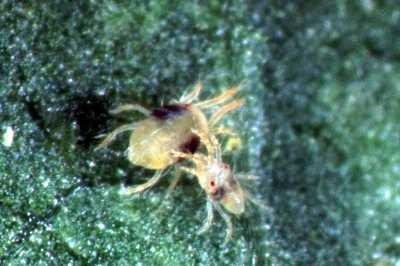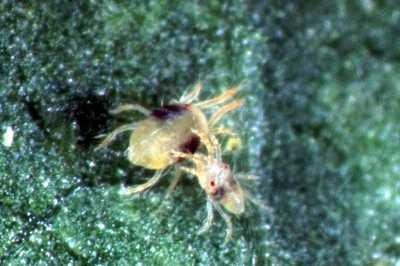

Spider mites
Several species of mites damage papaya (personal communication, M. Knapp, ICIPE):
- Spider mites (Tetranychus spp., Eutetranychus spp. and Oligonychus gossypii)
- The false spider mite (Brevipalpus phoenicis)
- The broad mite (Polyphagotarsonemus latus)
The spider mites suck the plant sap, leading to poor plant growth and blemish on the fruit. Infested leaves show yellow patches on the upper surface, particularly between main veins and midrib. Feeding by mites causes scarring and discolouration of fruit, and reduced fruit size affecting its market value. Infestations usually begin on the older leaves and the spreads to the younger growth. Serious infestations occur during long dry periods. Broad mites attack mainly the terminal buds; they feed on the young leaves as they emerge from the growing point. Affected leaves are thick and brittle, with down curled edges. Severe infestations inhibit new stem growth, with consequent reduction in fruit production.
- Apply mulch and organic manure at the rate of one debe per hole
- Practice good field sanitation, remove all infected plant parts, remove crop residues after harvest
- Use neem at 20-50 ml in 20 litres water, 3-4 times per season
- Avoid planting in infested fields
